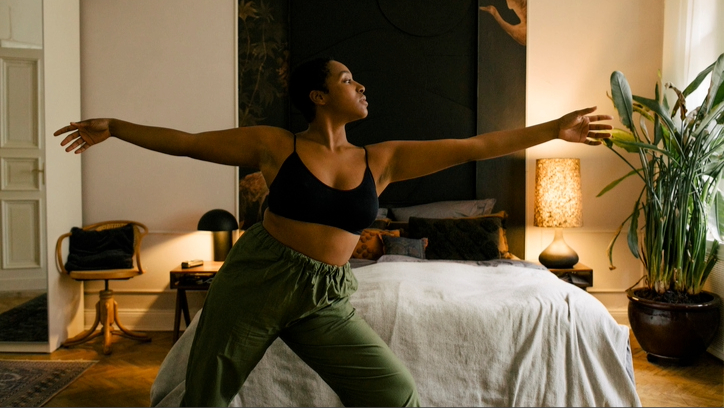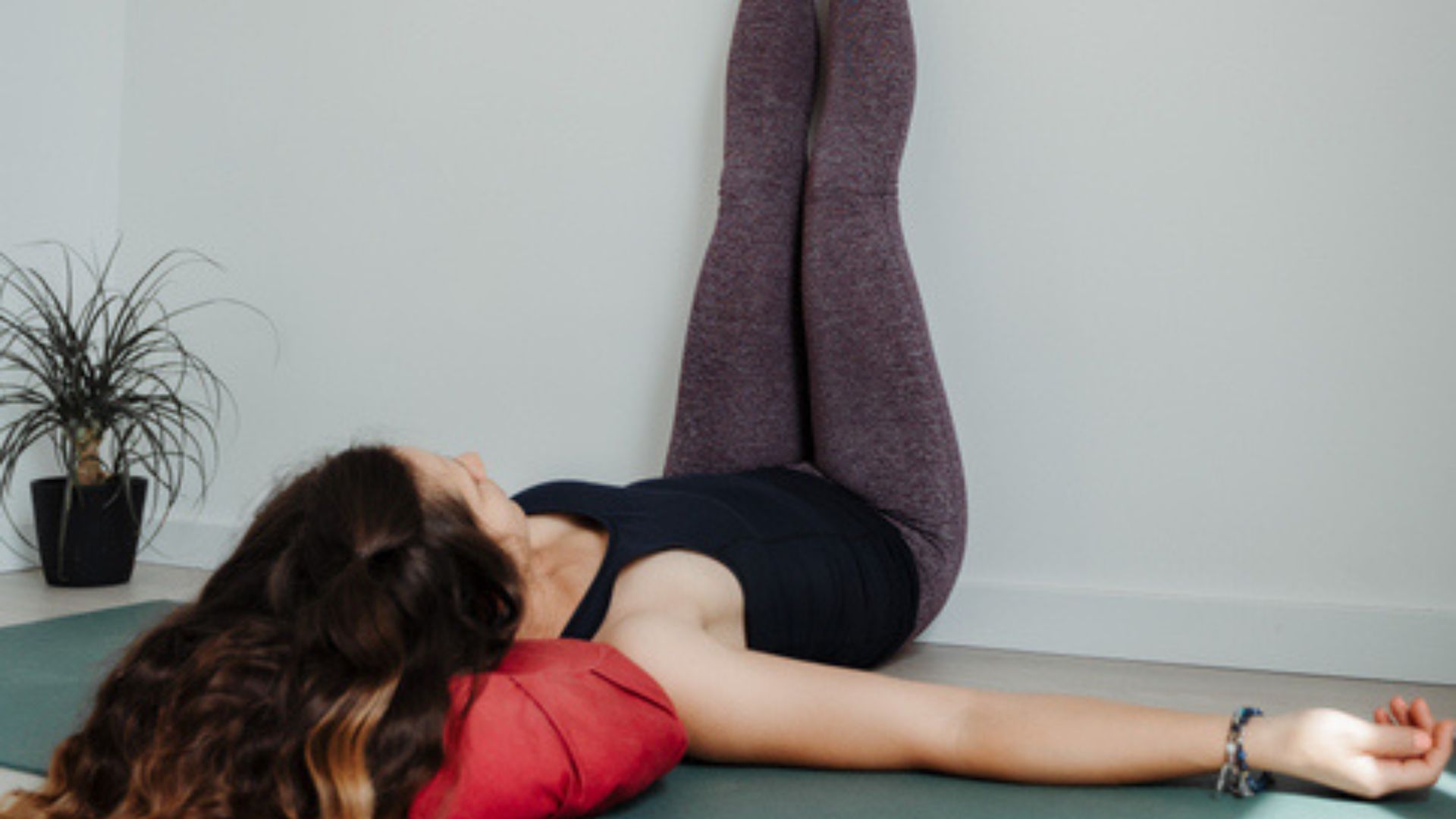Better sleep starting tonight — 7 stretches to help you fall asleep faster
Stretch your way to better sleep with these simple movements, say experts

If you're anything like me, you need to take a moment to decompress from the combination of work and a busy life schedule before getting into bed.
From vagus nerve stimulation to cricket feet to nighttime journaling, I've tried many gadgets and methods that promise better sleep.
But one practice I always come back to is a humble stretch routine — combined, of course, with a top-rated mattress suited to my body type and sleep style.
Even if you don't stretch every evening, adding some of the best before-bed stretches to your bedtime routine a few nights a week can have big benefits.
Here's how Dr. Dustin DebRoy, Manager of Chiropractic Education and Relations at The Joint Clinic, suggests you stretch your way to better ZZZs...
How does stretching help you sleep?
Among fads like mouth taping and sleepy teas, stretching is often overlooked as a natural sleep aid.
"Focus on movements that feel restorative, not strenuous"
Dr. Dustin DebRoy
A 2018 study looking at the impact of stretching on chronic insomnia found a positive association between stretching and objective and subjective sleep quality.
Get instant access to breaking news, the hottest reviews, great deals and helpful tips.
However, integrating some yoga poses into your nighttime routine comes with many sleep and health benefits, from improved muscle function to better sleep efficiency.
By activating the parasympathetic nervous system, stretching releases muscle tension and calms the mind, helping you let go of daily stress before hitting the hay.
This simple act of movement may serve as a powerful antidote to stress
Participants showed shorter sleep latency, less awakening after sleep onset and better sleep efficiency after 60 minutes of low-intensity stretching, three times a week from 5pm to 6pm, for four months.
“Stretching involves the slow, intentional lengthening of muscles and connective tissue, but its benefits go far beyond the physical," Dr. DebRoy explains.
"It may activate your body’s 'rest and digest' mode which slows heart rate, reduces blood pressure, and promotes a state of calm," he says.
What’s more, "Stretching may create a moment of mindfulness, grounding you in the present and easing mental chatter. Whether part of a bedtime ritual, this simple act of movement may serve as a powerful antidote to stress and a natural aid to deeper, more restorative sleep.”
The 7 best before-bed stretches
Whether you're looking to ease back pain, deal with a sleep disorder or just feel more refreshed in the morning, here are the expert-recommended stretches for better sleep...
1. Bear hug
- Stand with your feet shoulder-width apart and your arms out to your sides
- Inhale as you stretch your arms out wide, feeling a stretch in your chest
- Cross one arm over the other as if giving yourself a hug, pulling shoulders apart

Dr. DebRoy says that this gently stretches the upper back and shoulders, helping to release built-up tension from poor posture or screen time throughout the day.
Releasing this tension is particularly important for anyone working a sedentary job at a desk, which can increase the risk of sleep troubles by 37%, according to research published in the Journal of Occupational Health Psychology.
2. Rag doll forward fold
- Choose whether to stand with your feet hip-width apart or close together
- Exhale and hinge forward from the hips, relax torso and round your back
- Let your arms dangle heavily and sway side to side

Dr. DebRoy says this "passive forward bend" can "relax the spine and promote a calming effect on the nervous system." He explains that some individuals have reported a soothing mental release during this stretch.
Stretching many muscles at once, a forward fold pose releases tension in the neck, shoulders and back that can contribute to sleep disturbances. Meanwhile, the feeling of letting your whole upper body hang as dead weight feels relaxing.
3. Child's pose
- Start by kneeling on the floor and sit on your heels
- Slowly lean forward, resting your torso between your thighs
- Rest your forehead on the floor with your arms extended overhead

Hoping to sleep like a baby? According to Dr. DebRoy, the child's pose is "a deeply grounding pose that has the potential to stretch the spine and hips while encouraging mental clarity and stillness."
4. Supine figure four
- Start with your back flat on the floor and bring both knees towards your chest
- Lift one foot and cross your ankle over your other knee, creating a 'figure four' shape with your legs
- Interlace your hands behind your vertical thigh and hold, then repeat on other side

Often used to gently open the hips, this stretch may reduce tension from sitting or stress. Some individuals find it useful for releasing built-up pressure in the lower back and hips, which would otherwise cause back pain through the night.
Pair this stretch with one of this year's best mattresses for back pain for the best chance of putting back pain to rest.
But this one comes with caution as it demands flexibility in the knees. "Those with knee issues should approach this one with caution or avoid it altogether," Dr. DebRoy says.
5. Legs-up-the-wall pose
- Lie with your back flat on the floor near a wall
- Extend your legs up the wall, keeping your hips in touch with the wall
- Your legs should be straight or slightly bent, depending on flexibility

Again, this reclined position activates the relaxation response, helping calm the mind and body so it's easier to unwind before bed.
Elevating the legs can also promote blood flow, reduce swelling and alleviate discomfort or restlessness in the legs that can interfere with sleep.
6. Standing side bend
- Stand with feet hip-width apart with toes pointing straight ahead
- Raise one arm overhead and lean to the side
- Maintain the bend for a few moments, focusing on your breath, then repeat on other side

Targeting large muscles in the back, hips and torso, this one can "increase lateral flexibility and body awareness," says Dr. DebRoy.
"The controlled movement and breathing involved could promote a sense of balance and relaxation," he adds.
This sense of control is key to dealing with nighttime anxiety and compartmentalising thoughts so it's easier to switch off for sleep.
7. Neck stretch
- In a comfortable seated or standing position, tilt your head so your ear moves to your shoulder
- Place your hand on the side of your head to accentuate the stretch
- Release, gently turn your head from side to side and up and down, repeat on other side

Keeping your neck supported with the best pillow for your body and sleep style is key to maintaining proper spinal alignment and, therefore, avoiding back pain during the night.
This stretch can help your neck rest comfortably. "It targets the neck and upper traps and could support spinal alignment and reduce stiffness, especially for those who carry tension in the neck," Dr. DebRoy explains.
When should you stretch for better sleep?
The short answer: one hour before bed.
Dr. DebRoy says you should practice a gentle stretching routine about an hour before bedtime so there’s a buffer between your dynamic stretching movements and sleep.
Focus on movements that feel restorative, not strenuous
"This window allows your body to begin shifting into a relaxed, parasympathetic state," he explains.
"Your stretching sequence doesn’t need to be long, just 10 to 15 minutes of low-intensity, static stretches could be enough to help release tension and calm the nervous system," he adds. "Focus on movements that feel restorative, not strenuous."
What should fill the remaining hour of the day with? Dr. DebRoy recommends pairing your stretch routine with other relaxing activities, like reading, meditation or deep breathing, for the best sleep results.
Crucially, remember to keep your bedroom cool and dimly-lit while you complete this routine, so your internal body clock knows it's time to rest.

Eve is a sleep tech product tester and writer at Tom's Guide, covering everything from smart beds and sleep trackers, to sleep earbuds and sunrise alarm clocks. Eve is a PPA-accredited journalist with an MA in Magazine Journalism, and has four years’ experience writing features and news. In her role as Sleep Tech Product Tester and Writer for Tom's Guide, Eve is constantly trying out and reviewing the latest sleep products from brands such as Apple, Garmin, Whoop, Hatch, Sleep Number, Eight Sleep, and Oura. A fitness enthusiast who completed the London Marathon earlier this year, Eve loves exploring the relationship between good sleep, overall health, and physical performance, and how great sleep tech can make that relationship even better.
You must confirm your public display name before commenting
Please logout and then login again, you will then be prompted to enter your display name.
